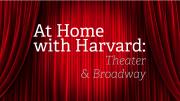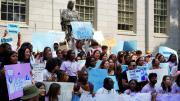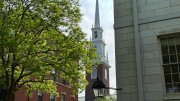This round-up is part of Harvard Magazine’s series “At Home with Harvard,” a guide to what to read, watch, listen to, and do while social distancing. Read the previous selections, featuring articles about income inequality, racial justice, immigration, and more, here.
In past weeks, we’ve covered Harvardians on the big screen (movies) and the small screen (television). Many alumni have found their way to the stage, too. Our coverage of Broadway and the theater industry is extensive, so we’ve compiled some of our favorites here for you this week.
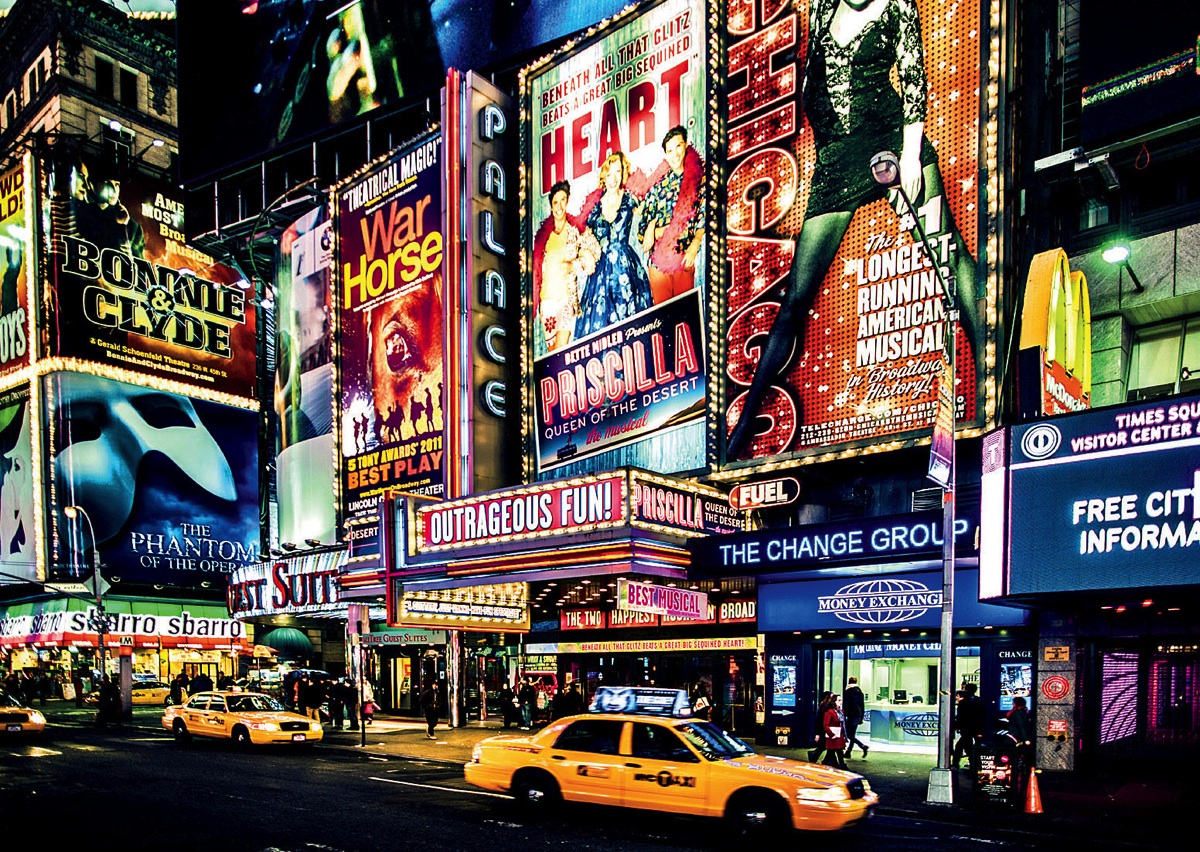
In vibrant Times Square, Broadway plays and musicals compete to become the next megahit.
Photograph by Christian Baitg Schreiweis/iStock
We admire a good story about rewriting history here at Harvard Magazine. In 2015, managing editor Jon Shaw wrote an article about then-assistant professor of English Derek Miller, who was engaged in an experimental project he called “Visualizing Broadway.” At the project’s heart is a database including virtually every musical and play that has appeared on Broadway since 1900, and encompassing data on run length, number of roles, long-term shifts in opening dates, networks of people involved in production, and changes in average ticket prices, among many other kinds of industry information. By compiling such data, Miller—now Loeb associate professor of the humanities—hopes to motivate a rethinking of traditional theater history.
Craig Lambert wrote a profile on (then senior) Michael Mitnick ’06 and his love of writing and composing musicals. This article feels like a time capsule, a snapshot in Mitnick’s story. He’s now quite an accomplished playwright and composer in Brooklyn.
~Kristina DeMichele, Digital Content Strategist
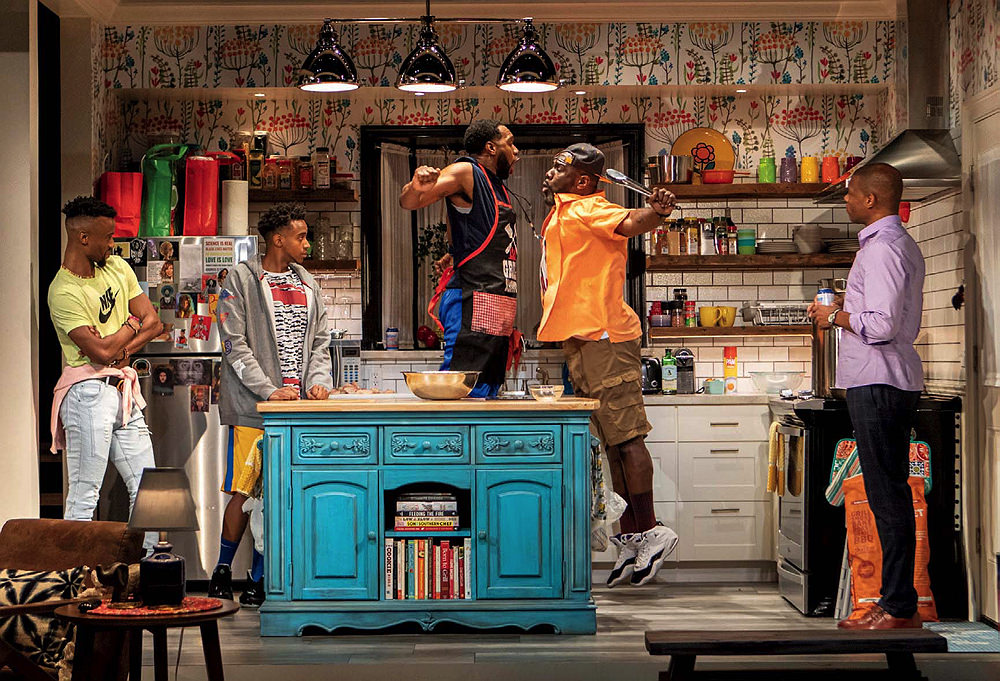
The cast of The Hot Wing King
Photograph by Monique Carboni
Theater as Church. One of my favorite recent arts profiles is this article on playwright Katori Hall, A.R.T. ’05. On the stage and screen (P-Valley, an adaptation of her play Pussy Valley, is currently streaming on Starz), Hall depicts both the trauma and the joy—and music—of black life. And in this profile, writer Stuart Miller captures the mix of playfulness and ferocity that fuels her work.
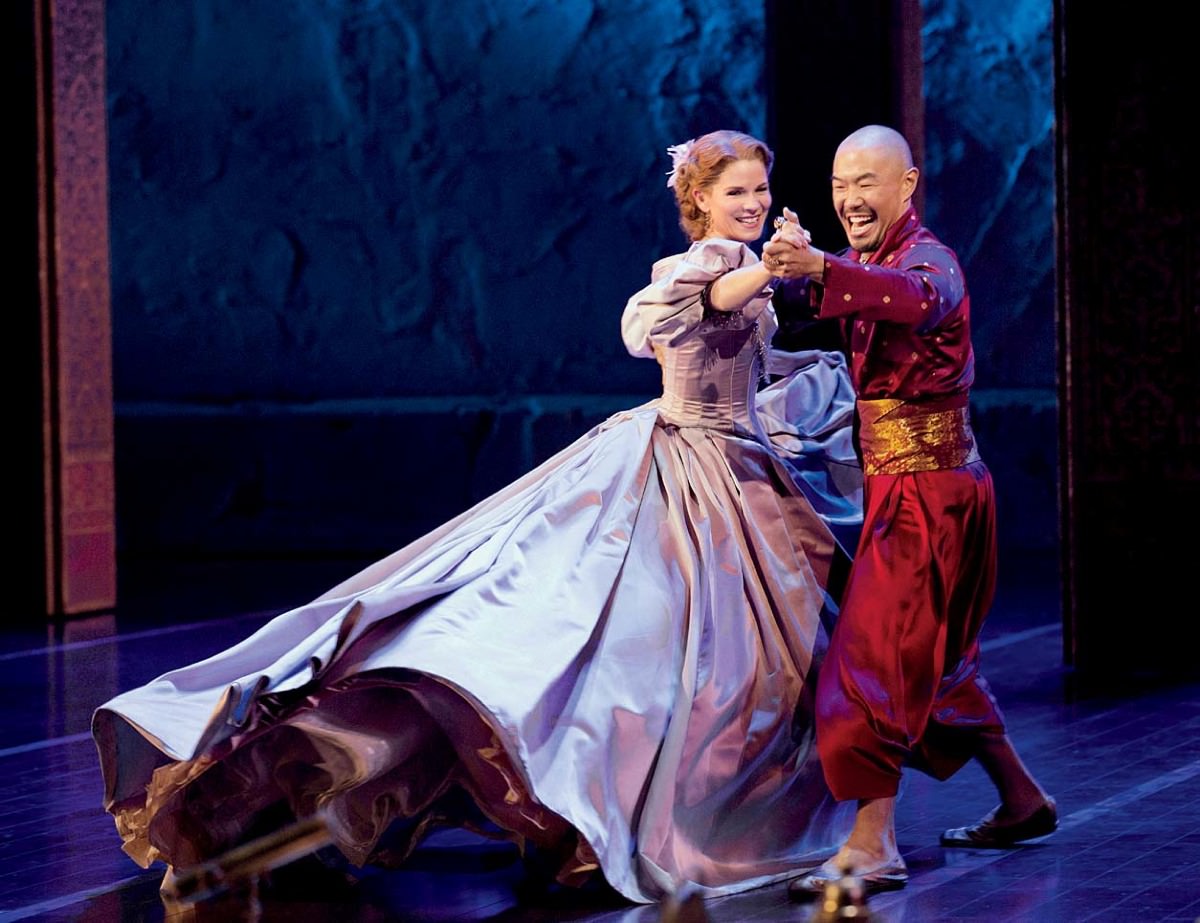
Lee leaps down the stage with co-star Kelli O’Hara in The King and I’s iconic polka, “Shall We Dance?”
Photograph by Paul Kolnik
The Man Who Has Been King. “Three times, Hoon Lee ’94 has been lord of all he surveyed on stage.” So begins Sophia Nguyen’s spirited profile of an actor who came to theater initially as an escape from tech-industry burnout and slowly, surely, found a home there. Describing the richness of his acting in the title role of The King and I (one of those regal roles), Nguyen writes, “At its center are deep reserves of humor, a joviality to match his petulance and pride….In seconds, through silent gesture—extended arm; turned cheek—a romance unfolds and is foreclosed.” A performer in total command of his power.
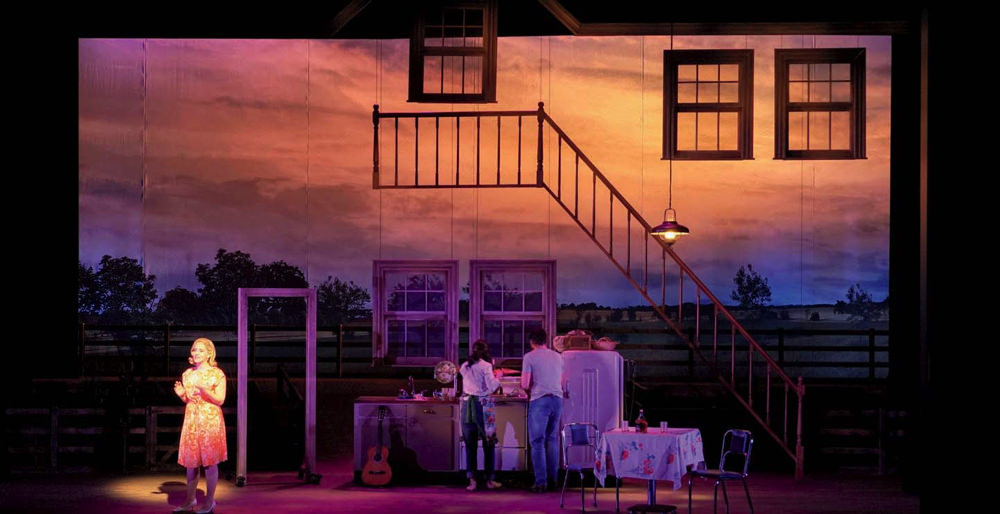
Mak designed lighting for a 2019 staging of The Bridges of Madison County by the Philadelphia Theater Company.
Photograph by Rich Hein
Creating a Scene. A lighting and set designer, Elizabeth Mak ’12 does work that, at its best, is almost invisible, escaping conscious notice by the audience, even as it shapes their experience. In this delightful profile, writer Nina Pasquini recounts how Mak, a Singapore native, arrived at her unlikely profession. “Where I come from, people don’t really have careers in the arts,” Mak said. “I had never met an artist growing up.”
~Lydialyle Gibson, Associate Editor
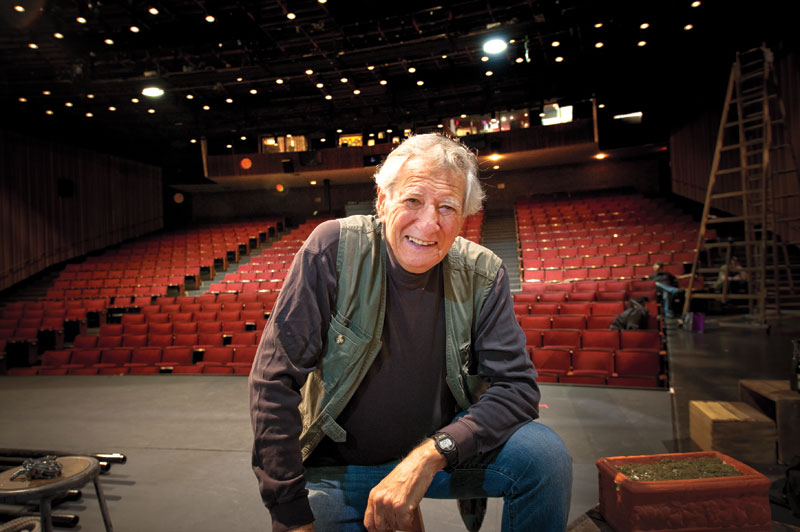
Robert Brustein onstage at the Loeb Drama Center, home of the American Repertory Theater, which he founded in 1979
Photograph by Stu Rosner
This article about the future of theater seems especially relevant now. With Broadway (and almost every other performance venue) shuttered, it’s a good time to think about what theater will look like when things return to normal, and whether “back to normal” is actually desirable. Craig Lambert, our former deputy editor, does a great job of putting modern conventions in historical context and revealing how leaders in the theater world are thinking about the future of the form. I found this quote especially fascinating:
“THERE’S A SYNDROME in our profession—to blame the audience, especially young people,” says Diane Paulus ’88, artistic director of the American Repertory Theater. “‘They don’t want to go to the theater anymore—why? They don’t have attention spans. They’d rather be in control, with their personal handheld devices. There are too many entertainment choices. We’re a depraved culture.’ I’ve always found this deadening, because it doesn’t give you any room to change. We have to flip that analysis and say, ‘Maybe it’s us—maybe it’s the arts producers.’”
-Jacob Sweet, Staff Writer/Editor
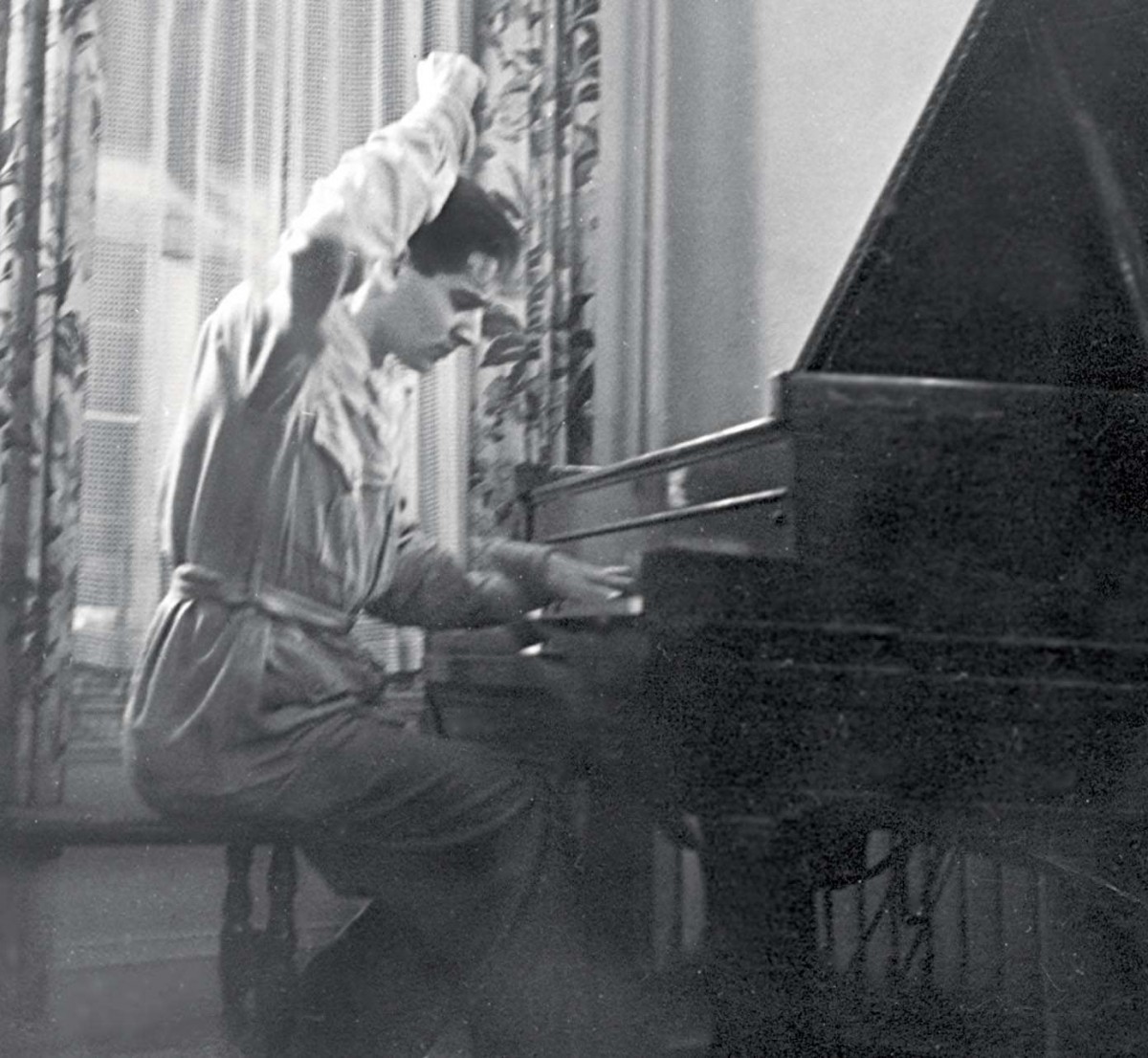
Dramatic even in his student days: Leonard Bernstein at the piano in 1936
Courtesy of Yale University Press
Leonard Bernstein ’39, D.Mus. ’67, the prodigiously talented musician, conductor, composer ,and author, is best known on Broadway for his musical West Side Story, later adapted for the screen. But Bernstein himself was fascinating, as Mason professor of music Carol Oja explained in “The Intoxication of Celebrity” in 2014. For example, Oja wrote that “today’s emerging acceptance of homosexuality makes it possible to explore with candor the complex life of a man who had many gay relationships (yet managed to thrive in a closeted America) at the same time as he was devoted to his wife, Felicia Montealegre.” A selection of his letters, gathered by Nigel Simeone, shed light on Bernstein’s personal relationships, and particularly his role in promoting the work of Aaron Copland.
~Jonathan Shaw, Managing Editor
More from “At Home with Harvard”
- Spring Blooms: Your guide to accessing the Arnold Arboretum as the seasons turn in Boston
- Harvard in the Movies: Our favorite stories about Harvardians on screen
- The Literary Life: Our best stories about the practice and study of literature
- Night at the Museum: Our coverage of Harvard’s rich museums and collections
- Nature Walks: Walking, running, and biking in Greater Boston’s green spaces, even while social distancing
- Supporting Local Businesses: Our extensive coverage of local restaurants and retailers, and how you can support them during this time of crisis
- Medical Breakthroughs: Our best stories going deep into the ideas and personalities that will shape the medical care of tomorrow
- Rewriting History: From race and colonization to genetics and paleohistory, our favorite stories about the people reshaping the study of history
- The Climate Crisis: Highlights from our wide-ranging coverage of the environment
- Crimson Sports Illustrated: With 2020 winter sports ending early and the spring collegiate season wiped out almost entirely, we look back at Crimson highlights from past years.
- The Real History of Women at Harvard: Stories covering the admission of women, the Harvard-Radcliffe merger, the rise of women in the faculty ranks, Harvard’s first woman president, and more
- The Undergraduate: Our favorite student essays on the undergraduate experience
- The Secret Lives of Animals: From zoology and evolutionary science to animal-rights law to the joys of local wildlife, a selection of our favorite animal stories
- Harvard on the Small Screen: Our coverage of the creators, writers, and actors in your favorite TV shows
- Extraordinary Lives: From our “Vita” section, extraordinary profiles of authors, artists, activists, and more
- Great Legal Minds: Our favorite stories on the minds reshaping American law
- Harvard History through a New Lens: Some of our most notable stories about obscure, dark, or surprising episodes in Harvard’s history
- Health and Fitness: Our extensive coverage of Harvard’s breakthough health and wellness research
- Pride Month: Stories of Harvard's LGBTQ life, research and history
- Inequality in America: Stories of America’s extreme inequality
- The Immigrant Experience: A selection of our writing on immigration, displacement, and the global refugee crisis
- Harvard in the World: Harvard Magazine’s coverage of the University’s expanding global reach
